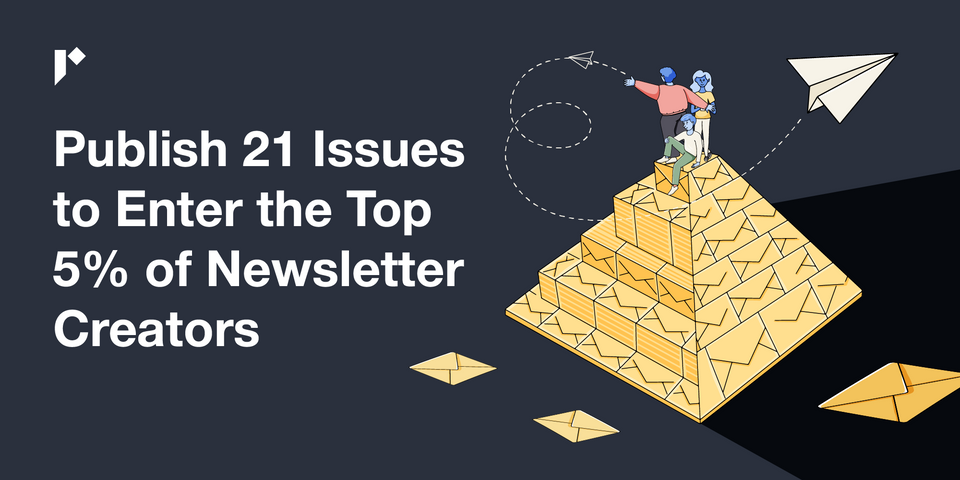There are a staggering 1.7m newsletters on Substack and LinkedIn alone and only 12% of them are currently active (i.e. they've published fresh content in the last 45 days).
Sadly, the majority of newsletters become victims to the dreaded “newsletter fade”, a phenomenon that sees them fade into obscurity as they give up on writing new posts.
Reletter is a newsletter database that provides tons of invaluable information including subscriber numbers, social media links, contact info and lots more. We analyzed our data to find out how long writers tend to stick it out for, and how you can improve the likelihood of producing a sustainable newsletter.
TL;DR:
- Only 35% of newsletters make it to two issues
- LinkedIn newsletter writers are slightly more likely to stick it out than Substack writers
- The number of new Substack newsletters has increased 23x since 2019
- Publishing 21 issues over 5 months increases your chances of success
✉️ Only 35% of newsletters make it to two issues
We started by looking at all Substack and LinkedIn newsletters and found that just over one-third of them (35%) published more than one issue [1]. 17% made it to five issues and 11% to ten issues.
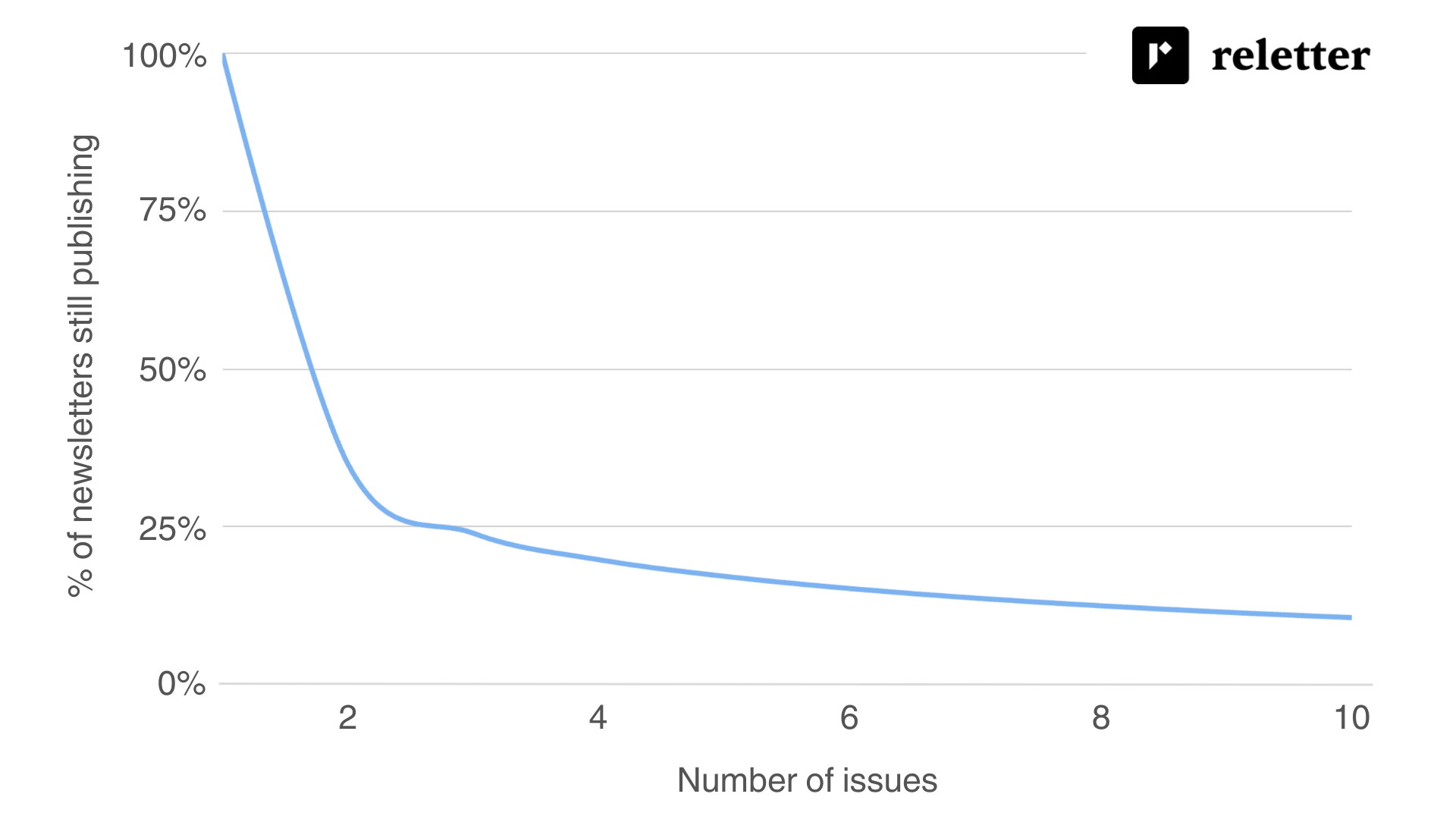
So why the dramatic drop-off?
Substack automatically publishes a 'coming soon' issue on the user's behalf when they create an account, so the vast majority of account holders never actually publish their own issue.
⬆️ LinkedIn newsletter writers are slightly more likely to stick it out
For the next chart we excluded all Substack newsletters with only one issue (which we assume to be the automated 'coming soon' post) to that we could compare the drop-off rates by platform.
We found that Substack newsletters are slightly more prone to newsletter fade than those on LinkedIn.
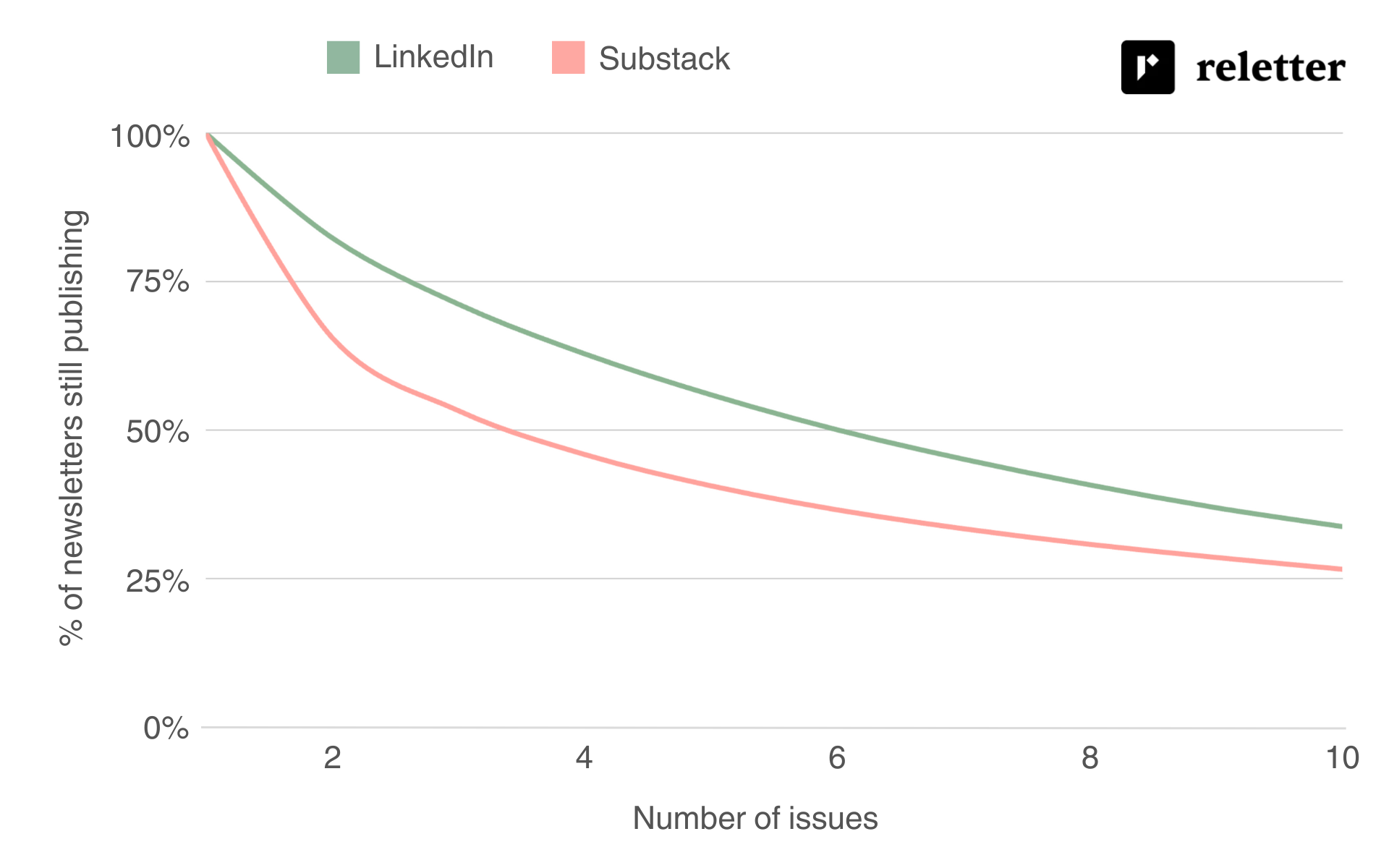
On Substack, 66% of newsletter writers published two issues, whereas on LinkedIn the figure comes in at 82%.
It's possible that on LinkedIn, writers have clearer goals and more realistic expectations for their newsletter, having figured out how a newsletter will support their business goals.
In contrast, Substack has a much broader target audience, and many users may not have done the planning required to create a sustainable newsletter, e.g. finding a niche or brainstorming content ideas.
🚀 The number of new Substack newsletters has increased 23x since 2019
Just over 15k Substack newsletters were launched in 2019 compared to almost 380k in 2022. Substack boomed in popularity and naturally, the average quality of newsletters on the platform will have decreased.
Perhaps the fierce competition is causing new writers to give up more rapidly.
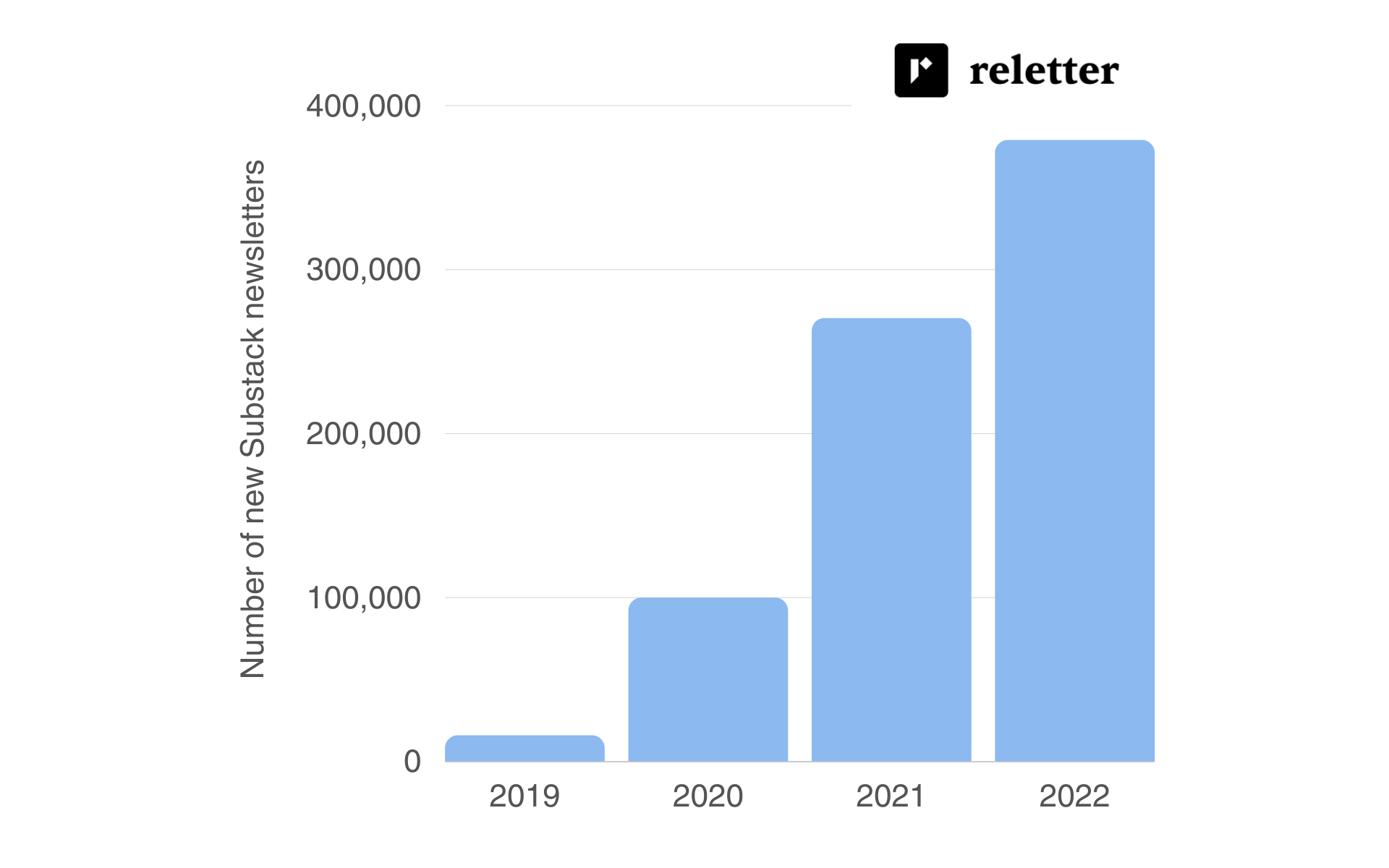
🎯 Publishing 21 issues over 5 months increases your chances of success
Many newsletter writers set their sights on a goal of one thousand subscribers. Among active newsletters that haven’t yet reached this milestone, the average number of issues stands at 21. With that in mind and the fact that only 5% of newsletters make it to 21 issues, it's a great target to improve your odds of establishing a sustainable newsletter.
Likewise, active newsletters boasting fewer than one thousand subscribers have only been in publication for around five months on average. This implies that patience is key, as you should expect to publish for an extended period before seeing results.
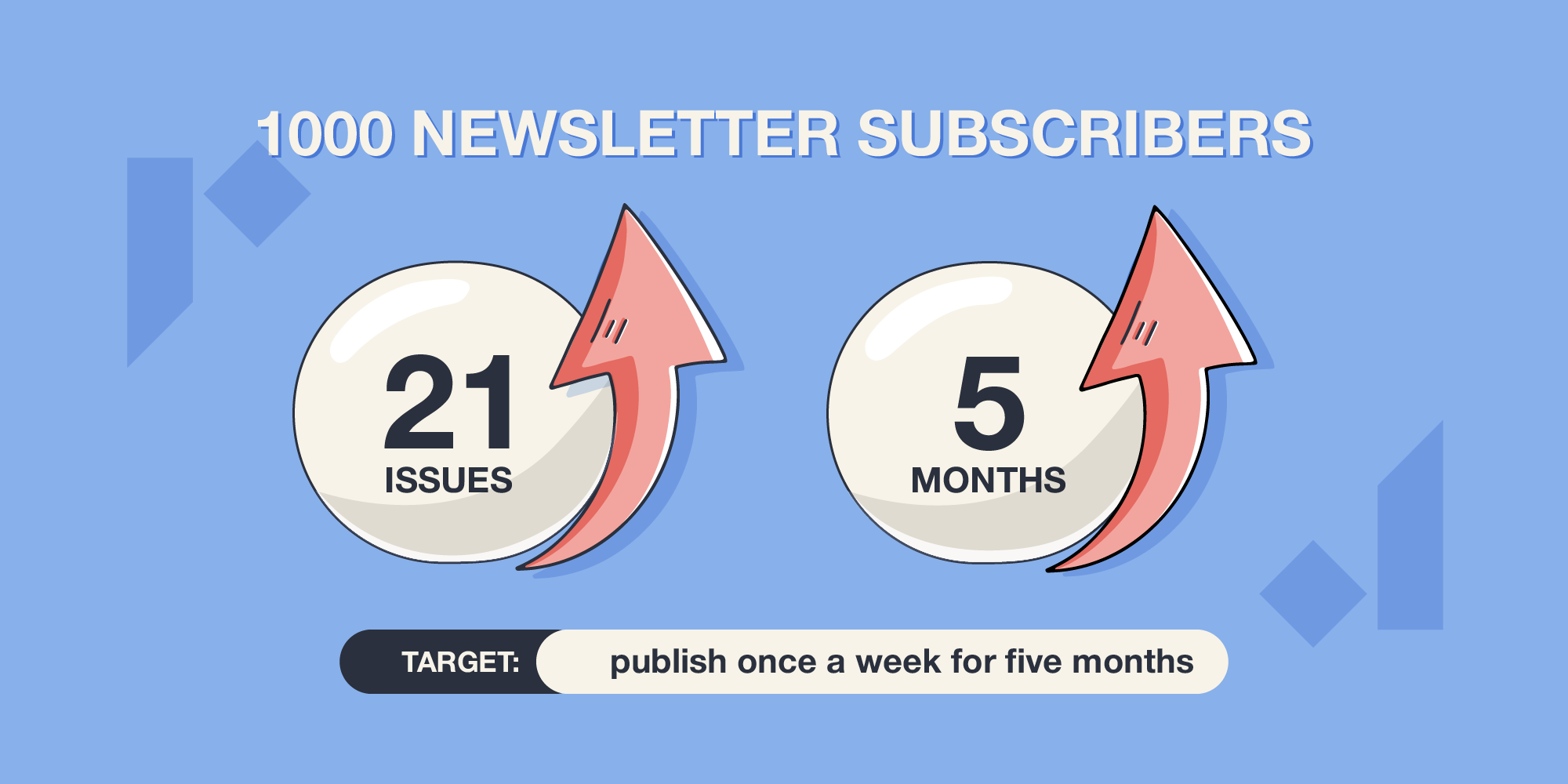
The figures above roughly align with maintaining a publishing cadence of once a week for five months. As you go on your newsletter journey, consider committing to this publishing schedule. Once the five month mark arrives, you can assess your progress and decide whether it’s worth sticking it out or best to cut your losses.
Final thoughts
Running a sustainable newsletter isn’t easy, as our stats on newsletter fade would suggest, but you can significantly increase your chances by committing to a publishing schedule over a certain time period.
Before you start publishing, put aside some time to nail down your niche and generate at least 21 content ideas (or however many issues you're committing to). This way you won't become a victim to content burnout!
If you’re looking for more tips on how to create a successful newsletter, check out our previous article where we looked at the stats to see how long your newsletter should be to get 100k subscribers.
Once you’ve got the ball rolling with your newsletter, find untapped cross-promotion opportunities with Reletter. Search 1.7m newsletters by topic and access subscribers numbers, social media accounts, engagement scores, contacts and lots more.
Footnotes
[1] We only looked at Substack and LinkedIn newsletters for this article. There are some newsletters that haven't published any issues. We excluded these from the charts in this article.

